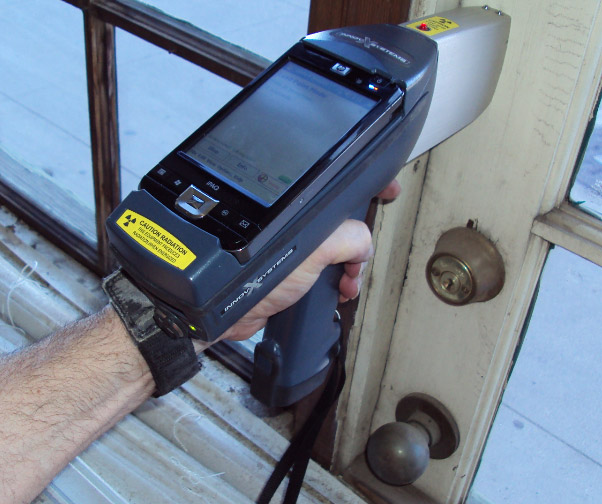Step-by-Step Process for Effective Lead Infraction Remediation
Attending to lead offenses requires a thorough and structured strategy to ensure both safety and regulatory compliance. The journey starts with the precise discovery and assessment of contamination resources, making use of innovative diagnostic tools. Following this, adherence to government and state policies is paramount to developing an efficient removal strategy. Such a plan must information the certain techniques and timelines for action. The actual remediation needs skilled personnel to execute these strategies while strictly following safety protocols. What takes place after the remediation is finished? The response depends on recognizing the necessary post-remediation techniques that make certain long-term security and neighborhood wellness.

Discovery and Analysis
Detection and evaluation are vital steps in the remediation of lead offenses. To make certain an effective remediation process, it is essential to carry out a complete evaluation of the setting where prospective lead exposure exists.
This includes evaluating the level and extent of contamination, as well as determining populations at risk, particularly children and expecting females. The collected data ought to be meticulously documented to sustain the development of an effective remediation strategy.
Moreover, it is necessary to prioritize areas with the highest degree of contamination and those that posture the biggest health and wellness risks. Reliable interaction with stakeholders, including homeowner, homeowners, and public health and wellness officials, is important for ensuring that all parties are educated about the findings and the subsequent steps required for remediation. This preliminary detection and analysis phase lays the groundwork for a successful lead offense remediation process.

Lawful and Governing Conformity
Browsing the landscape of lawful and regulatory conformity is a crucial facet of effective lead infraction remediation. Conformity guarantees not just the safety of damaged populations however likewise the integrity and legal standing of the company responsible for removal.
State and neighborhood regulations can differ, frequently enforcing added responsibilities or even more stringent criteria. Consequently, a comprehensive understanding of all relevant legal frameworks is important. This entails meticulous documentation of all removal activities to demonstrate conformity. Failure to abide by these regulations can cause severe penalties, consisting of large penalties, legal activity, and reputational damage.
Involving legal professionals specialized in ecological law can promote navigating these complexities. Routine training and qualification for all employees involved in the remediation process are additionally required to guarantee adherence to safety and regulatory requirements. By focusing on legal and regulatory compliance, organizations can effectively reduce risks and accomplish an effective remediation outcome.
Planning the Removal
Successfully intending the remediation of lead infractions begins with a comprehensive analysis of the contaminated website. This preliminary analysis must include a comprehensive website investigation to determine the extent and focus of lead contamination. Comprehensive tasting and laboratory evaluation are paramount to develop a precise contamination account. This data-driven approach ensures that remediation initiatives are appropriately targeted and efficient.
When the contamination is mapped, a threat evaluation ought to be conducted to evaluate potential health risks to people and the atmosphere. Lead Violation Removal in NYC. This assessment should consider aspects such as direct exposure paths, population susceptability, and environmental effects. The understandings collected will certainly develop the basis for selecting a suitable removal approach
Ultimately, establishing clear, attainable purposes for the remediation task is crucial. These goals should straighten with regulatory standards and stakeholder assumptions to ensure compliance and community acceptance. Creating a detailed remediation strategy that outlines approaches, timelines, and source appropriation will certainly help with an organized method to the cleaning procedure.
Additionally, it is important to engage with stakeholders early and maintain clear interaction throughout the preparation phase. This consists of notifying local areas, obtaining needed authorizations, and collaborating with regulative companies to make certain all lawful and step-by-step demands are fulfilled. A well-crafted removal plan not only addresses the contamination effectively yet additionally develops trust and participation among all celebrations involved.
Executing the Removal
With a well-structured removal plan in position, the focus shifts to the actual execution of the remediation tasks. This phase includes setting in motion the needed sources, consisting of competent personnel, customized equipment, and premium materials. Begin by plainly marking duties and obligations to guarantee accountability and smooth view it control among group participants.
This includes setting up control areas to stop lead dirt and particles from dispersing, as well as employing air filtration systems to keep air high quality. Use approaches such as damp scratching, chemical removing, or encapsulation, depending on the severity and location of the contamination.
Throughout the removal procedure, conduct periodic evaluations and air high quality monitoring to guarantee conformity with governing criteria. Effective interaction with stakeholders, consisting of homeowner and passengers, is important to keep them educated of development and any kind of unanticipated advancements. By meticulously complying with these steps, the removal look at here now tasks can be executed efficiently and properly, eventually mitigating lead risks.
Post-Remediation Strategies
Post-remediation techniques play a critical function in ensuring the long-lasting success of lead infraction removal efforts. These methods include ongoing monitoring, maintenance, and neighborhood education to stop future lead exposure and make sure a risk-free atmosphere.
First, routine surveillance is essential. This entails regular screening of the formerly affected areas to ensure that lead degrees stay within risk-free limitations. Homeowner must develop a schedule for these tests, preferably in cooperation with licensed ecological professionals.

Third, enlightening the area plays an essential function in maintaining the benefits of removal. Locals and residential or commercial property managers need to be notified about the threats of lead exposure and the very best practices for maintaining browse around these guys a lead-safe atmosphere. Workshops, informational handouts, and area meetings can be effective tools for disseminating this info.
Verdict
Successful lead violation remediation needs a detailed, systematic technique including discovery and analysis of contamination, adherence to legal and regulatory standards, precise preparation, and efficient implementation of removal initiatives. Post-remediation techniques, including constant monitoring and neighborhood education, are important to maintain a lead-safe setting. Partnership with ecological professionals makes sure continuous compliance and defense of public health and wellness. This systematic process underscores the importance of thoroughness and alertness in addressing and alleviating lead contamination.